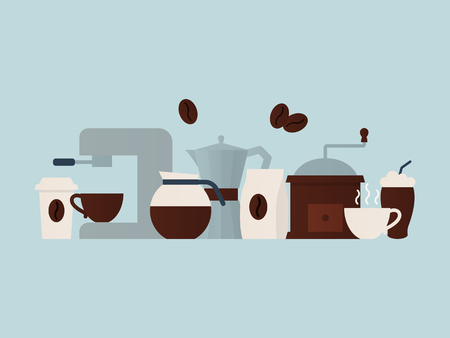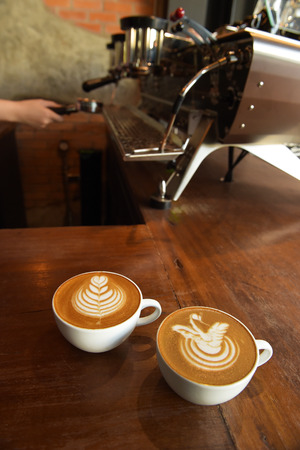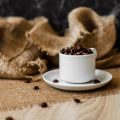The Blue Bottle Coffee Story: From Oakland to the World
Blue Bottle Coffee’s journey began in the early 2000s, nestled in the vibrant community of Oakland, California. Inspired by a passion for fresh, meticulously roasted coffee and a dedication to quality over quantity, founder James Freeman launched what would become one of America’s most influential specialty coffee brands. In an era dominated by mass-produced brews, Blue Bottle set itself apart with its commitment to single-origin beans, small-batch roasting, and a “48-hour rule” that ensured every cup was brewed from beans at their peak freshness. This uncompromising approach quickly garnered attention among coffee aficionados across the Bay Area and soon attracted a devoted following nationwide.
As the specialty coffee movement gained momentum in the United States, Blue Bottle became synonymous with third-wave coffee culture—emphasizing transparency, sustainability, and craftsmanship. Its minimalist cafes and scientific brewing methods resonated with urban Americans looking for more than just caffeine—a sensory experience rooted in both flavor and ritual. The brand’s rise from local roastery to national icon laid the foundation for its global ambitions, setting the stage for an expansion that would see American coffee culture intersect with new traditions abroad. Nowhere is this blend of innovation and heritage more evident than in Blue Bottle’s bold venture into Japan—a market renowned for its own deep-rooted reverence for precision and excellence.
2. The Japanese Connection: Why Japan Fell in Love with Blue Bottle
When Blue Bottle Coffee entered the Japanese market, it wasn’t just another American brand crossing the Pacific; it was the beginning of a cultural and sensory synergy. To understand why Blue Bottle resonated so deeply with Japanese consumers, we need to analyze the intersection between American specialty coffee culture and Japan’s own values—namely, craftsmanship, minimalism, and a profound appreciation for high-quality experiences.
The Allure of Craftsmanship
Japan has a long-standing tradition of valuing the art of making things well—from sushi chefs perfecting their rice for decades to artisans crafting ceramics by hand. Blue Bottle’s meticulous approach to sourcing, roasting, and brewing coffee aligns seamlessly with this ethos. Each cup is a product of precise technique and attention to detail, echoing Japanese concepts such as “shokunin” (artisan spirit) and “kodawari” (dedication to quality).
Minimalism Meets Specialty Coffee
Blue Bottle’s store designs emphasize clean lines, natural materials, and uncluttered spaces—qualities that mirror traditional Japanese aesthetics. This minimalism doesn’t just appeal visually; it also creates an environment where customers can focus on the flavors and aromas in their cups. The ambiance invites mindfulness, turning each visit into a quietly immersive experience rather than a rushed caffeine fix.
Table: Cultural Values Fueling Blue Bottles Appeal in Japan
| Cultural Value | Blue Bottle Expression | Impact on Japanese Consumers |
|---|---|---|
| Craftsmanship (“Shokunin”) | Handcrafted brewing methods, careful bean selection | Trust in quality and authenticity |
| Minimalism (“Kanso”) | Sleek store design, simple branding | Aesthetic harmony, sense of calm |
| Quality Experience (“Kodawari”) | Freshness guarantee, personalized service | Loyalty driven by consistent excellence |
Sensory Experience: Beyond Just Coffee
Japanese consumers are renowned for their sensitivity to flavor nuance and presentation. Blue Bottle’s dedication to freshness—serving only coffee made within 48 hours of roasting—and its slow barista-led pour-over service match this sensibility. Every sensory detail is carefully curated: from aroma to taste to visual presentation. This holistic approach transforms coffee drinking into an elevated ritual, aligning perfectly with Japanese customs around tea ceremonies and seasonal culinary enjoyment.
The Synthesis: A New Standard for Café Culture
The success of Blue Bottle in Japan stems from more than just importing great coffee; it’s about creating an experience that feels both authentically American and unmistakably tailored for Japanese values. By harmonizing craftsmanship, minimalism, and sensory immersion, Blue Bottle set a new standard for what a café can be in Japan—a place where every detail matters and every sip tells a story.

3. East Meets West: The Art of Coffee Brewing Redefined
Blue Bottle Japan stands as a fascinating fusion point where Californian coffee culture is meticulously blended with Japanese artistry. At its core, Blue Bottle originated in Oakland, California, with a vision to elevate specialty coffee through transparency, freshness, and innovation. When this philosophy crossed the Pacific, it encountered Japan’s deep-rooted dedication to craft, precision, and minimalism—qualities that have long defined Japanese hospitality and culinary arts.
The Californian Specialty Coffee Ethos
In California, Blue Bottle pioneered practices such as sourcing single-origin beans, using small-batch roasting techniques, and emphasizing direct relationships with farmers. These methods focus on highlighting the inherent flavors of each bean and ensuring sustainability throughout the supply chain. The result is coffee that’s not only fresh but also expressive of its origin—a hallmark of American specialty coffee culture.
Japanese Precision and Aesthetics
Upon arriving in Japan, Blue Bottle’s team quickly recognized the local reverence for detail and ritual. The Japanese approach to brewing—whether it’s pour-over or siphon—centers on exact measurements, water temperature control, and deliberate movements. This methodical attention elevates each cup into a sensory experience. In addition to technique, design plays a crucial role: Blue Bottle Japan’s cafes feature clean lines, natural materials like wood and stone, and an inviting calmness reminiscent of traditional Japanese tea houses.
A Harmonious Collaboration
The collaboration isn’t just about importing American ideas; it’s about co-creation. Blue Bottle Japan baristas are trained in both Californian and Japanese styles, blending intuitive American hospitality with omotenashi—the Japanese philosophy of wholehearted service. This results in a uniquely immersive environment where customers can witness their coffee brewed with scientific accuracy yet presented with artistic flair.
A Distinctive Experience for Every Senses
Ultimately, Blue Bottle Japan redefines what it means to enjoy specialty coffee by drawing from the strengths of both cultures. The meticulous brewing process ensures consistency and quality, while the serene cafe atmosphere invites guests to slow down and savor every sip. It’s a cross-cultural experience that appeals not just to taste buds but also to the senses of sight, smell, and even touch—showcasing how East truly meets West in every cup.
4. Design and Atmosphere: Beyond Just Coffee
Blue Bottle Japan is more than a destination for coffee; it is an immersive spatial experience where design and atmosphere play pivotal roles in shaping customer perception and behavior. The brand’s approach to interior design is a sophisticated fusion of American minimalism and Japanese attention to detail, resulting in spaces that feel both innovative and deeply rooted in local aesthetics.
The hallmark of Blue Bottle Japan’s interiors is their restraint—spaces are airy, uncluttered, and bathed in natural light. Raw materials like pale wood, concrete, and glass are used to create environments that invite calm reflection and intentionality. This design ethos mirrors the Japanese concept of ma, or negative space, while maintaining the approachable warmth characteristic of American West Coast cafes.
Below is a comparison table highlighting key elements of Blue Bottle Japan’s design philosophy, reflecting both American and Japanese influences:
| Design Element | American Specialty Coffee | Japanese Excellence | Blue Bottle Japan Synthesis |
|---|---|---|---|
| Material Choice | Industrial (metal, concrete) | Natural (wood, paper, stone) | Pale wood with subtle industrial accents |
| Spatial Layout | Open-plan for socialization | Zoned for privacy and contemplation | Flexible seating for both groups and individuals |
| Lighting | Functional overhead lighting | Soft, indirect daylighting | Abundant natural light through large windows |
| Aesthetic Theme | Sleek minimalism with urban edge | Simplicity rooted in tradition (wabi-sabi) | Minimalist yet warm; elegant without being cold |
| Cultural Touchpoints | Coffee as community anchor | Café as meditative retreat | A space for both connection and serenity |
This hybrid approach has influenced the broader café scene in Japan by demonstrating that third-wave coffee shops can offer more than just beverages—they can provide thoughtfully designed environments that cater to a spectrum of needs, from solo work sessions to lively gatherings. The seamless blending of American specialty coffee culture with Japanese spatial philosophy at Blue Bottle Japan sets a new standard for what customers expect from their local cafés. Ultimately, each visit becomes not just about coffee, but about experiencing a harmonious blend of form, function, and feeling.
5. Sourcing and Sustainability: Global Beans, Local Values
Blue Bottle Japan has set a new standard in sourcing coffee beans that aligns with both American specialty coffee culture and the high expectations of Japanese consumers. At the core of their philosophy is an unwavering commitment to responsibly sourced beans from around the globe, ensuring not only superior flavor profiles but also ethical supply chains. Blue Bottle’s direct-trade relationships with farmers emphasize transparency, fair compensation, and long-term partnerships—values that resonate strongly in Japan, where trust and quality are paramount.
Environmental consciousness is woven into every aspect of Blue Bottle Japan’s operations. From compostable cups and straws to energy-efficient café designs, sustainability isn’t just a buzzword—it’s a daily practice. Their Tokyo roastery sources renewable energy and minimizes waste, mirroring the broader Japanese cultural emphasis on minimalism and respect for nature. In addition, Blue Bottle actively supports initiatives to reduce carbon footprints throughout its logistics chain, from farm to cup.
For health-minded Japanese consumers, this eco-friendly approach goes hand-in-hand with a desire for clean, traceable food and beverage options. Knowing that their morning pour-over is both ethically sourced and environmentally gentle gives customers peace of mind—a critical factor in a country where wellness trends and environmental stewardship often overlap. Blue Bottle Japan’s dedication to these principles positions it as more than just a coffee brand; it is a model for responsible consumption in an increasingly health- and eco-conscious society.
6. What Americans Can Learn from Blue Bottle Japan
Cultural Sensitivity: Elevating the Customer Experience
One of the most compelling lessons from Blue Bottle Japan is its deep respect for local culture and customs. American coffee shops can benefit greatly by embracing this approach, focusing on genuine hospitality and meticulous attention to detail. The Japanese concept of “omotenashi,” or wholehearted hospitality, transforms every customer interaction into a memorable experience. By training staff to anticipate guests’ needs and encouraging thoughtful service rituals, U.S. cafes can foster stronger customer loyalty and set themselves apart in a crowded market.
Culinary Excellence: Harmonizing Coffee and Food
Blue Bottle Japan’s menu demonstrates an elevated understanding of food and beverage pairing, integrating seasonal Japanese ingredients with classic American café fare. This balance inspires a new standard for culinary innovation in coffee shops. For American operators, there is value in collaborating with local bakers or artisans, sourcing fresh ingredients, and offering rotating seasonal selections that reflect regional tastes. Not only does this approach appeal to health-conscious consumers, but it also supports local economies and enhances brand authenticity.
Operational Precision: Streamlined Yet Personalized Service
The operational model at Blue Bottle Japan is marked by precision and efficiency without sacrificing warmth or individuality. Their baristas are highly trained, able to deliver both technical excellence and personal touches—like hand-pouring each cup and engaging customers in meaningful conversation about flavor profiles. U.S. coffee shops can learn from this hybrid model by investing in advanced staff training programs that prioritize both skill development and emotional intelligence, resulting in higher-quality beverages and more satisfying guest experiences.
Sustainability as a Core Value
Another standout element is Blue Bottle Japan’s commitment to sustainability—from ethically sourced beans to eco-friendly packaging. American cafés can adopt similar practices by partnering with responsible suppliers, minimizing waste, and educating customers about their efforts. These steps not only reduce environmental impact but also resonate with increasingly conscious consumers seeking brands with a purpose-driven mission.
Continuous Innovation: Bridging Tradition and Modernity
Finally, Blue Bottle Japan’s success lies in its ability to blend traditional Japanese aesthetics with cutting-edge coffee technology. This willingness to innovate—while honoring heritage—offers a blueprint for U.S. coffee shops aiming to stay relevant in an evolving industry. By experimenting with brewing methods, store design, and unique collaborations, American cafés can create spaces that intrigue, delight, and inspire their communities.
In summary, Blue Bottle Japan provides a powerful example of how specialty coffee can thrive when global expertise meets local excellence. By adopting these cultural, culinary, and operational insights, American coffee shops have the opportunity to redefine the café experience for their own audiences—one thoughtful cup at a time.


